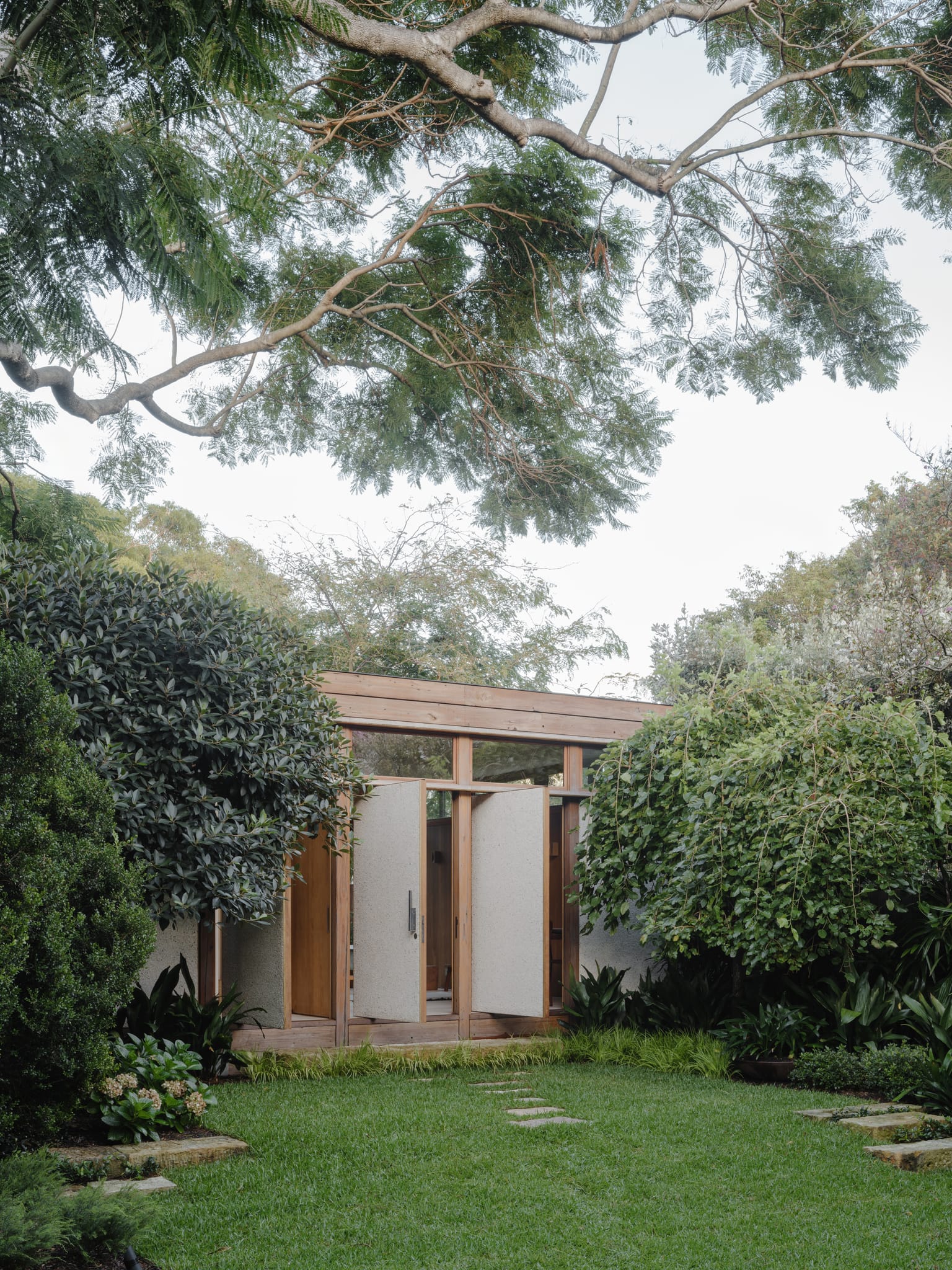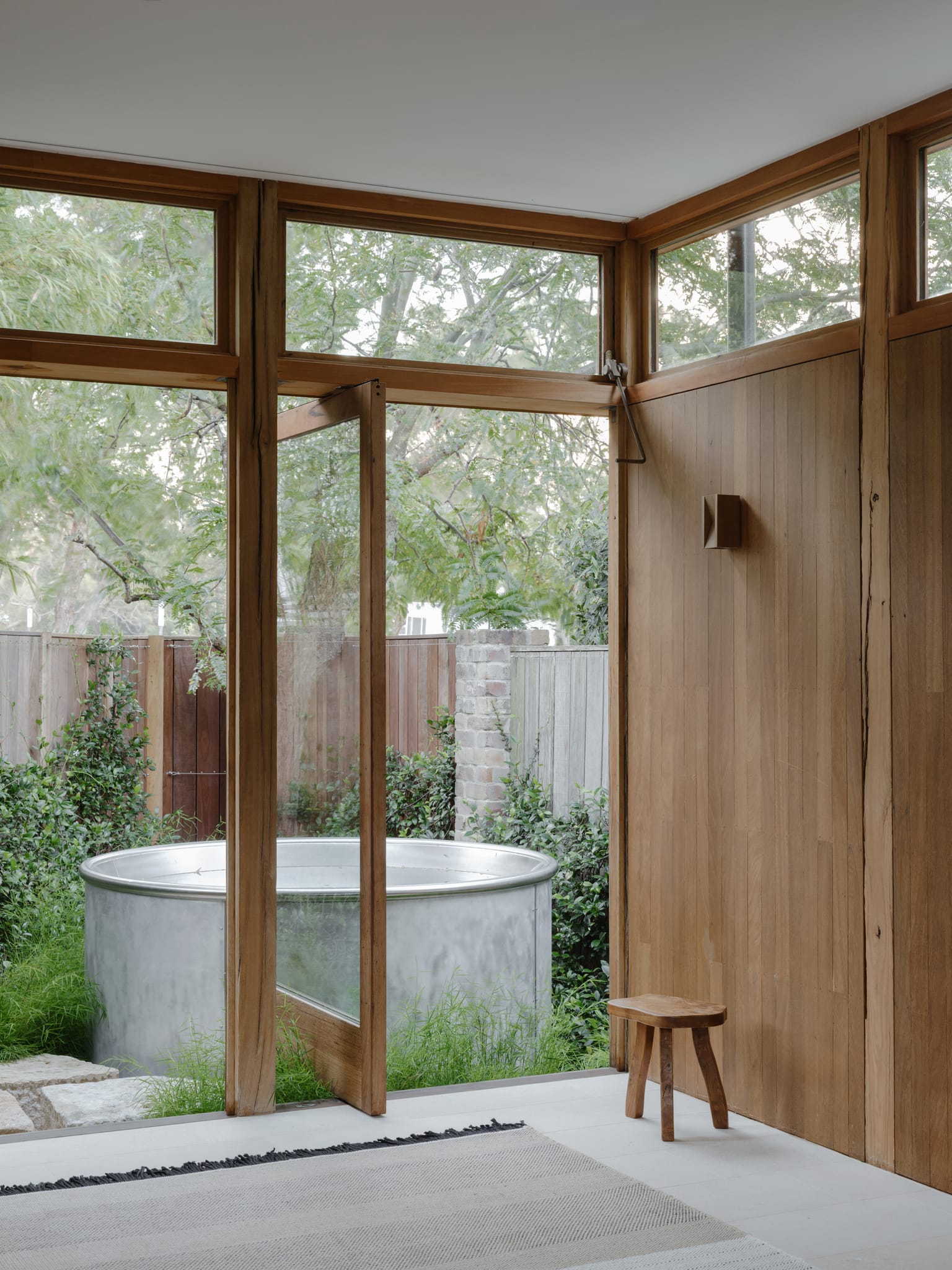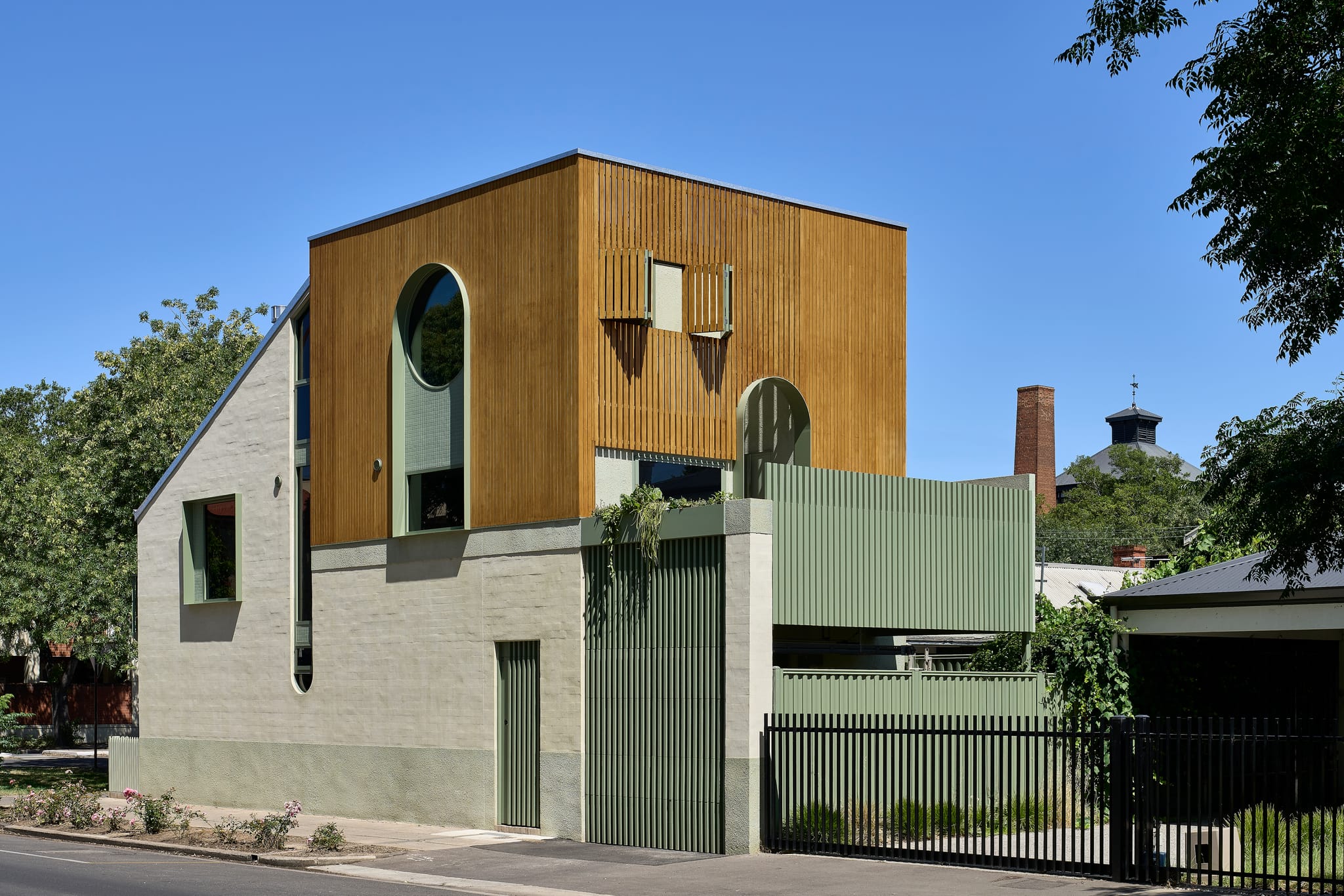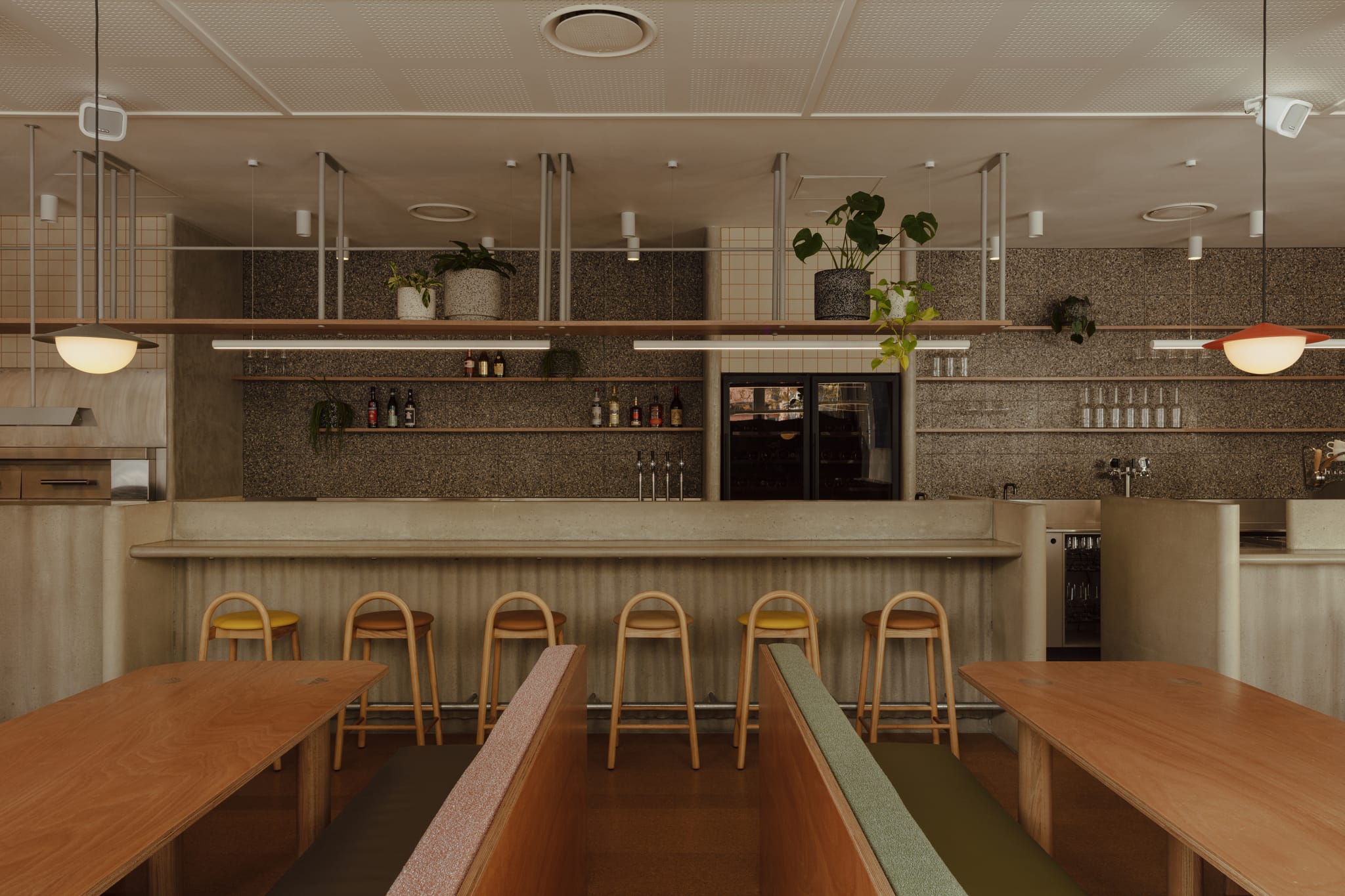Love Shack
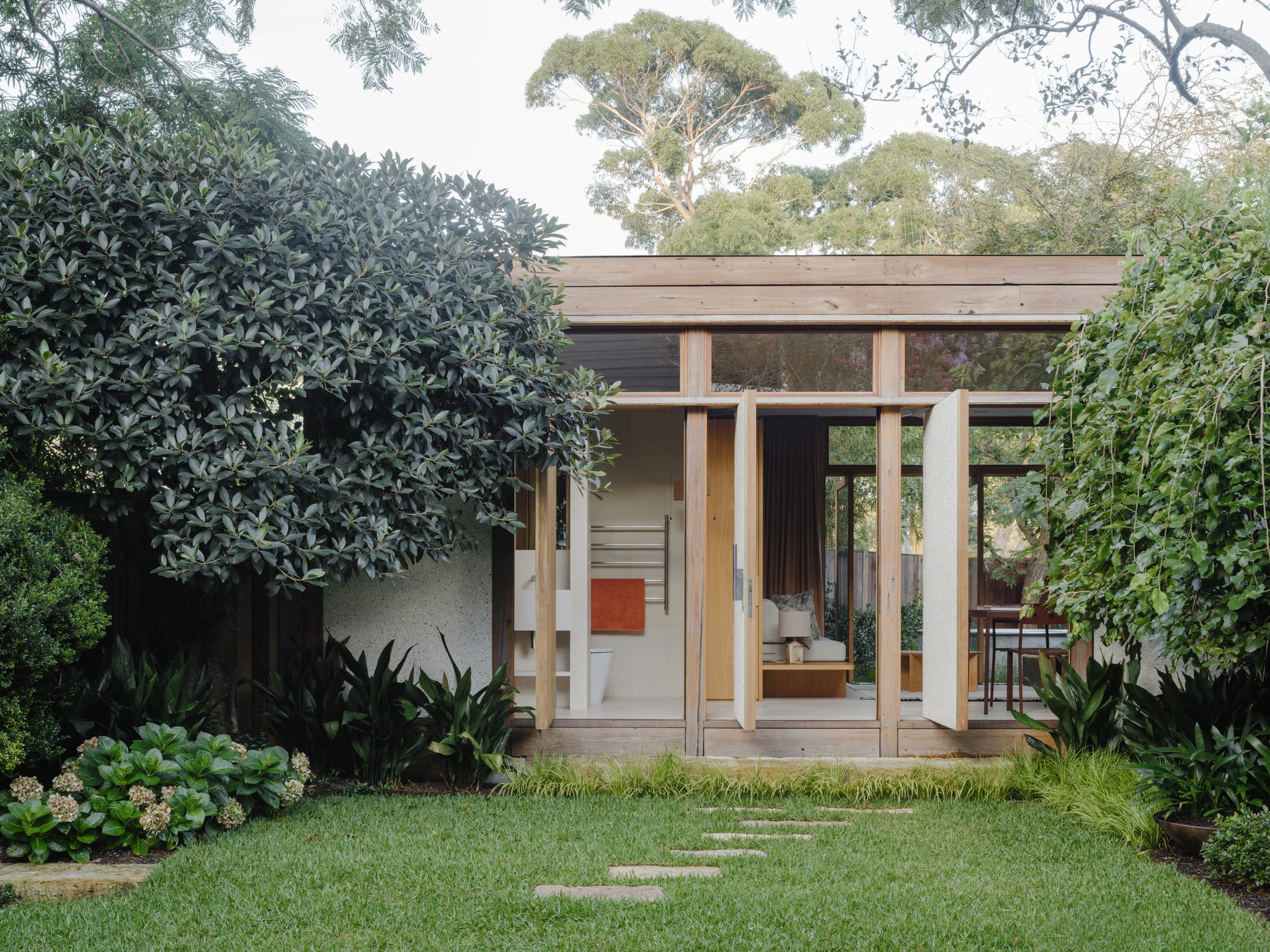
Designed and built by Second Edition, a Sydney-based research practice that explores deconstruction and reuse within the built environment, Love Shack is a compact prototype that demonstrates how small-scale architecture can shift big-picture thinking.
Located in a coastal Sydney suburb, Love Shack is an agile structure utilising lightweight recycled timber elements and glass. Essentially a freestanding pavilion, it comprises one main space with external panels that can pivot 90 degrees to enhance ventilation and draw outdoor vistas within.

Design Intent
Fully versatile, Love Shack can function as a dedicated work space, guest bedroom or additional lounge room as is the case with this project given its compact footprint sits within the garden of a family residence. Conceived by Second Edition, whose practice explores resource-efficient building processes to deliver projects that are less environmentally wasteful, it was equally designed for disassembly (DfD).
Love Shack’s front door is fully integrated amongst its façade, with no visible distinction between fixed and operable panels. In this incarnation, Second Edition selected the Aluminium Pull 01 handle from the Casts Collection by Edition Office for its “sculptural quality, durability, and compatibility with the natural materials used throughout the project,” according to Shahar Cohen, Second Edition’s Co-founder.
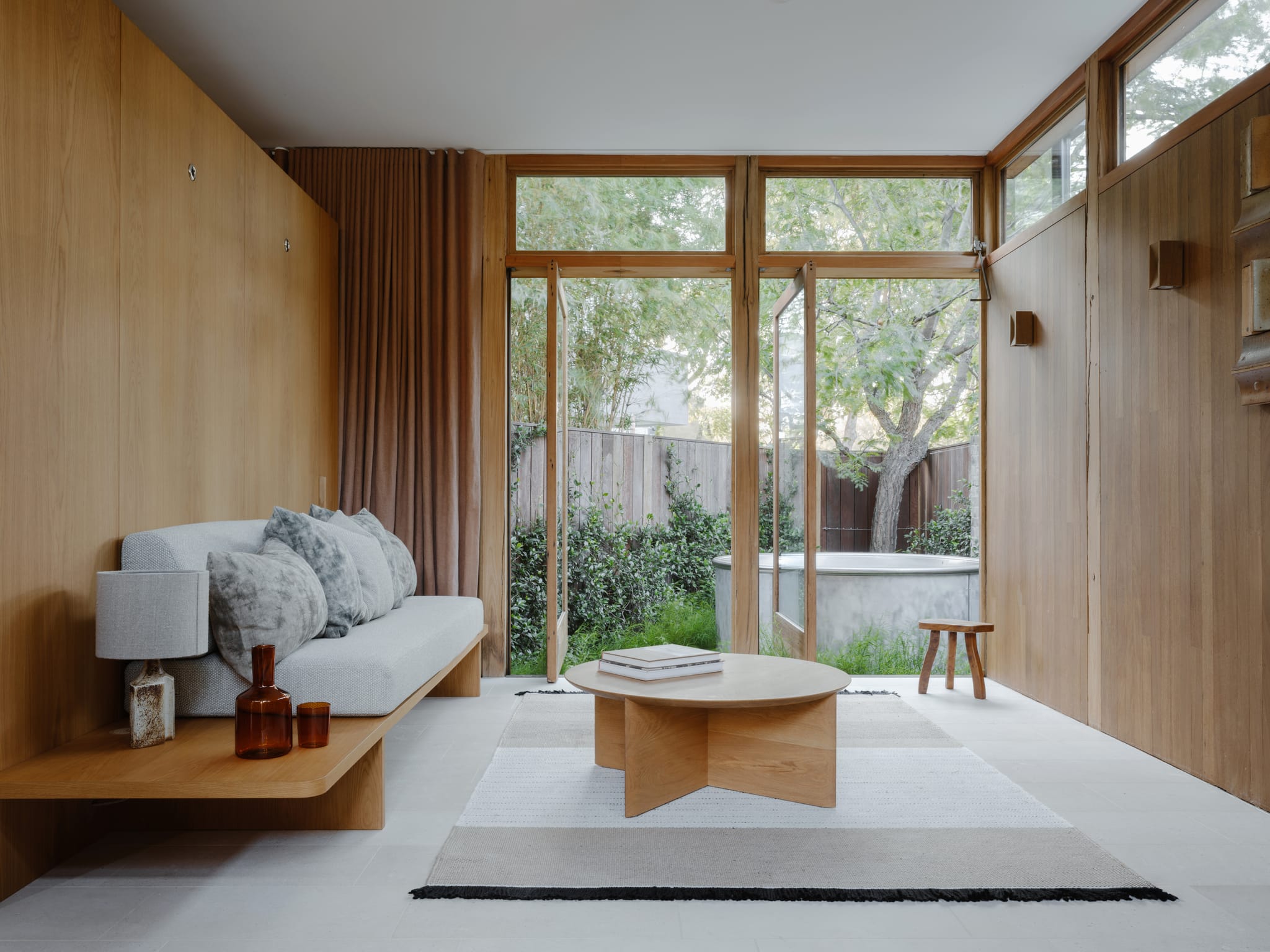
Practical Adornment
Facing the home’s rear, the elongated pull adds a subtle shimmer, with its easy-to-grab cylindrical form enhancing the vertical scale of the door and wall panels. Crafted via a sandcasting technique that enhances subtle pitting and pour marks, “the hardware invites engagement and movement, talking to the idea that the space is not static, but responsive and adaptable to daily use,” adds Shahar. Lightweight yet strong, the solid yet refined pull is also resistant to corrosion, further aligning its ethical suitability to the project given Love Shack also features salvaged hardware.
“Every handle, latch, and pull was chosen to enhance how the user interacts with the building—intuitively, seamlessly, and often in unexpected ways.” – Shahar Cohen
Reframing preconceived notions regarding how salvaged materials should look and perform, Love Shack reinforces the concept that architecture and hardware can adapt and respond to the rhythms of daily life. And in this instance, hardware does not play a supportive role. It completes the narrative.
